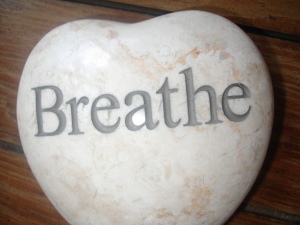| By: Unknown | Page Views: 2656 | ||
| How to breathe consciously, and why you might want to. | |||
Conscious Breathing

Many people do not breathe consciously. Fortunately, there is a built-in mechanism (the autonomic nervous system) that keeps us breathing, anyway.
Breathing consciously is a good meditative tool simply because you do not usually do it. Our brains, through which your ego accesses the information in your Fields, normally limit us to focusing on one thing at a time. If you insist on concentrating on your breathing, you cannot become fixated upon the raise you were hoping for and didn't get, the child you think needs more discipline, or the bill payment you forgot to mail. Breathing deeply and regularly while working on a particular problem can help maintain a clear head when you need it most.
Not to say that, when you are trying to meditate, distractions don't try to replace the focus on breathing.
When they do, acknowledge them (Yes, I know. Later.
), gently move them aside, and return
your focus to breathing.
The great thing about breathing techniques is that you can practice them at any time, and absolutely no one will know you are doing it! But, meanwhile, your blood pressure is lowering, your pulse stops racing, and you can gather your wits about you before returning to the fray.
Each subsequent workshop will feature a distinct breathing technique. In this workshop, we will examine two basic techniques that can be used alone, or as a meditative tool.
Conscious Breathing Exercise 0-c
Start by inhaling deeply, to the count of 12.
Then exhale to the count of 12. Release all the air you just took in.
Hold for the count of 12.
Repeat 3 times.
What was your experience?
Alternate Nostril Breathing

If your distractions seem to intrude even with the best attempts at conscious breathing, this ancient Hindu practice should do the trick. The physical movements of keeping the finger on the appropriate nostril takes all the concentration you can muster, with no mental cycles left to produce the distractions of the work-a-day world.
This is also a good thing to do to calm hiccups. One set of twelve should suffice.
With your right index finger held against your right nostril, inhale to the count of twelve through your left nostril.
Exhale through that same nostril to the count of twelve.
With your left index finger held against your left nostril, inhale to the count of twelve through your right nostril.
Exhale through that same nostril to the count of twelve.
Repeat three times. Avoid hyperventilation.



